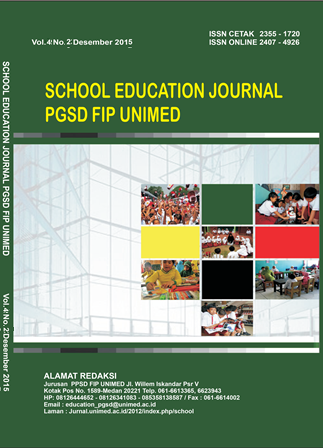APPLICATION OF TWO TYPES OF COOPERATIVE LEARNING MODEL TWO STAY TO STRAY TO IMPROVE STUDENT LEARNING OUTCOMES IPS PGSD UNIMED
DOI:
https://doi.org/10.24114/sejpgsd.v4i2.3620Abstract
The problem in this research is the low student learning outcomes in social studies. This research aims to improve learning outcomes Students Cooperative model with Type Two Stay Two Stray. The population in this study is the Student PGSD FIP UNIMED to amount to 34 people. Data collection techniques performed in two cycles, with each cycle consisting of four stages: planning, action, observation and reflection. The results obtained show that the learning outcomes of Supreme Student PGSD FIP UNIMED implemented using two stay two stray is the complete 20 people with a percentage of 58.83% who did not complete 14 people with a percentage of 41.17%. At the end of the test on the second cycle obtained 32 with the percentage of 94.11% which is thoroughly studied and incomplete 2 with a percentage of 5.89%. In this case in accordance with the indicators of success of 100% action. Keywords: Cooperative Learning, Learning OutcomesDownloads
Published
Issue
Section
License
Authors whose manuscripts are approved are approved as follows:
The publication rights for all journal manuscript materials published/published on the SEJ (School Education Journal) E-Journal site are held by the editorial board with the author's knowledge (moral rights remain with the manuscript authors).
The formal legal requirements for accessing this electronic digital journal article are subject to the terms of the Creative Commons Attribution-ShareAlike (CC BY) license, which means that E-Journal SEJ (School Education Journal) has the right to store, transfer media/format, manage in the form of a database, maintain, and publish articles without asking permission from the author as long as the author's name remains as the copyright owner.
Manuscripts published/published electronically are open access for educational, research, and library purposes.

